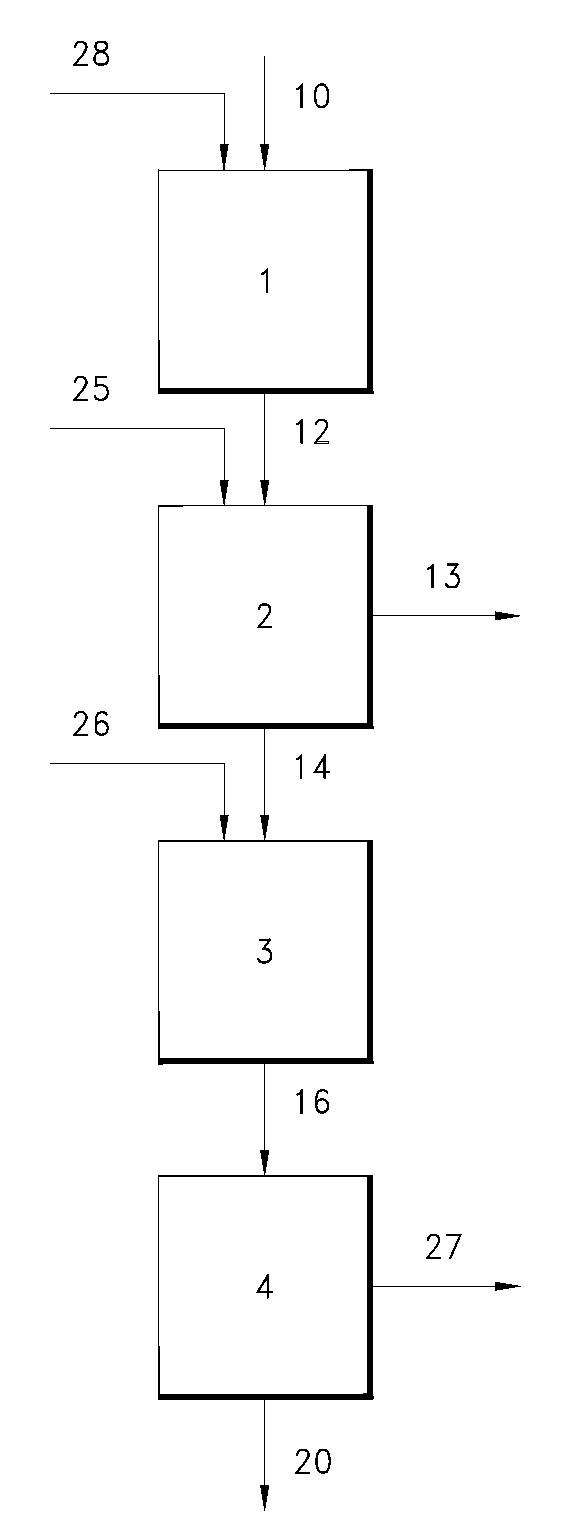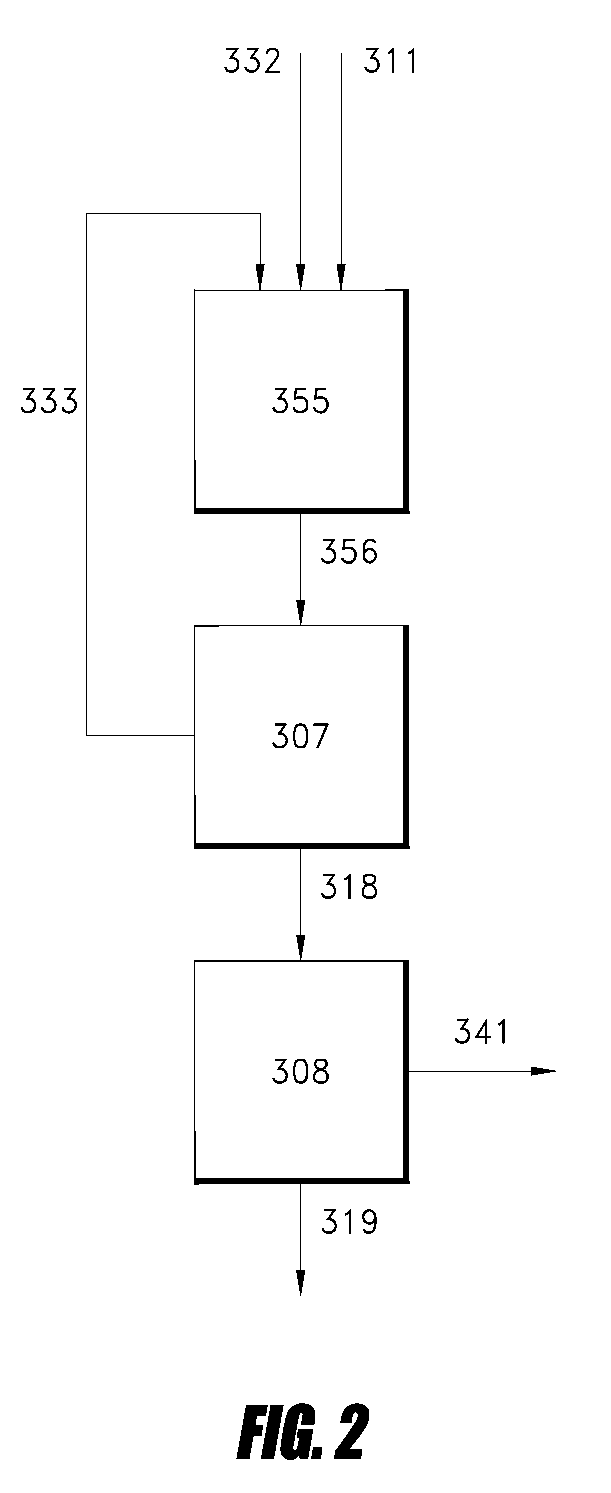Gas phase process for monoalcohol production from glycerol
- Summary
- Abstract
- Description
- Claims
- Application Information
AI Technical Summary
Benefits of technology
Problems solved by technology
Method used
Image
Examples
example 1
Combined Reactor
[0254]A liquid feed of 20% technical grade glycerol in deionized (DI) water was fed at 18 g / hr through a flowmeter to a preheater where it was vaporized and heated to approximately 290° C. The glycerol-water feed was combined with 100 ml / min (25° C., 1 atmosphere) hydrogen and fed to a reactor bed. The reacted product stream from the reactor bed was condensed and the liquid condensate analyzed. The flowrates of the condensed liquid stream and the noncondensible gases were measured. Reactor pressure was held at approximately 6 bar (absolute). The reactor bed contained two zones of catalyst. The first zone (closest to the feed inlet) contained dehydration catalyst (WO3 / ZrO2, 1 mm bead). The second zone contained and equal amount of a mixture of 90% dehydration catalyst (WO3 / ZrO2, 1 mm bead) and 10% hydrogenation catalyst (Topsoe, 1 mm grain).
[0255]The condensed liquid stream was analyzed by gas chromatography with a CP-3800 gas chromatograph (Varian Inc., Palo Alto, Ca...
example 2
Dehydration Reactor
[0257]The experimental set-up and operation were as described in Example 1, except that no hydrogen was added. The condensed liquid stream had the following composition and illustrates the higher production of acrolein.
CompoundRetention time (Min.)Quantity (Area %)Acetic aldehyde3.232.21Propionaldehyde3.417.61Acrolein3.5850.42Unknown4.161.332-pentanol5.164.24Hydroxyacetone7.1123.16Valeric acid9.9511.03Total100.00
example 3
Dehydration Reactor and Hydrogenation Reactor
[0258]A solution of 20% glycerol (technical grade) in DI water at 0.3 mL / minute was heated and vaporized and fed to a first tubular reactor (25 mm diameter, 250 mm length) containing 39 mL (60 g) of 10% WO3 / ZrO2 dehydration catalyst (1 mm grains), then to a second tubular reactor (12 mm diameter, 250 mm length) containing 12 mL (11 g) of Topsoe hydrogenation catalyst (1 mm grains). Between the two reactors, 400 mL / minute (1 atmosphere, 25° C.) of hydrogen was added. The first reactor inlet temperature was 307° C. and the outlet temperature was 260° C. The second reactor inlet temperature was 205° C. and the outlet temperature was 250° C. Both reactors were operated at 5 bar (absolute). After exiting the second reactor, the gas stream was condensed and the condensate analyzed by gas chromatography as in Example 1. The chromatogram is shown in FIG. 11, which indicates the high conversion to propanol.
PUM
| Property | Measurement | Unit |
|---|---|---|
| Temperature | aaaaa | aaaaa |
| Temperature | aaaaa | aaaaa |
| Fraction | aaaaa | aaaaa |
Abstract
Description
Claims
Application Information
 Login to View More
Login to View More - R&D
- Intellectual Property
- Life Sciences
- Materials
- Tech Scout
- Unparalleled Data Quality
- Higher Quality Content
- 60% Fewer Hallucinations
Browse by: Latest US Patents, China's latest patents, Technical Efficacy Thesaurus, Application Domain, Technology Topic, Popular Technical Reports.
© 2025 PatSnap. All rights reserved.Legal|Privacy policy|Modern Slavery Act Transparency Statement|Sitemap|About US| Contact US: help@patsnap.com



